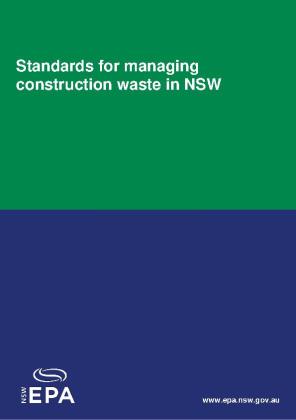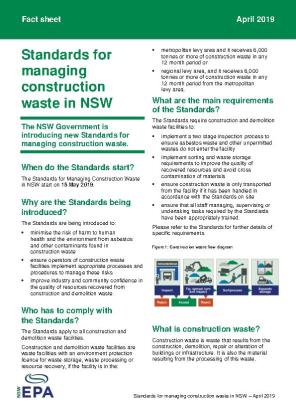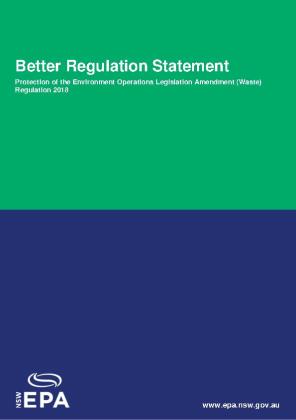Standards for Managing Construction Waste in NSW
The Standards for Managing Construction Waste in NSW (PDF 279KB) start on 15 May 2019.
The Standards are being implemented to
- ensure that waste facilities handling construction waste implement appropriate processes and procedures to minimise the risk of harm to human health and the environment posed by asbestos
- improve community and industry confidence in the quality of the recycled products they use
Information on the Standards and which waste facilities must comply with their inspection, training and storage requirements are contained in the Standards fact sheet (PDF 166KB) and the frequently asked questions below.
Other changes commenced on 16 November 2018
Other changes to the Protection of the Environment Operations (Waste) Regulation 2014 (Waste Regulation) began on 16 November 2018. The changes are contained in the Protection of the Environment Operations Legislation Amendment (Waste) Regulation 2018 (Amendment Regulation) (PDF 230KB).
These changes included
- a prohibition on exhuming waste at current or former landfills
- increased penalty notice amounts for asbestos waste offences




